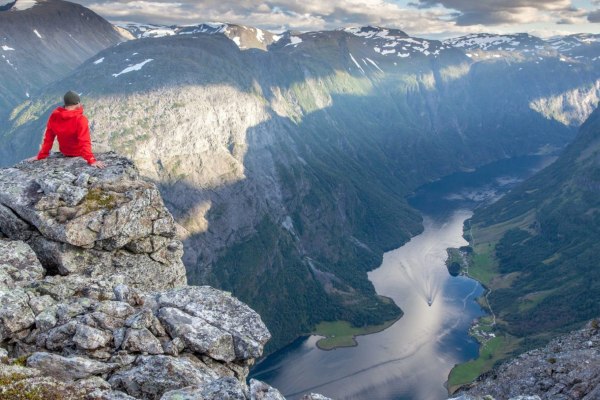Published on the 02/02/2021 | Written by Heather Wright

Accenture’s Fjord Trends 2021 reveals new opportunities…
Ask not what new technology can do for you, instead ask what your existing technology can do for you.
It’s a complete bastardisation of JFK’s famous inaugural address from 1961, but it’s also one of the key takeaways for New Zealand and Australian businesses from Accenture’s Fjord Trends 2021 report, according to Ben Morgan, Accenture New Zealand managing director.
The professional services company says the Covid-19 crisis is redefining how economies and society as a whole function and the resulting wave of innovation is set to be the blueprint for decades to come.
“Create a platform and let your customers use your data to enable them to play and create with your products and services.”
But Morgan told iStart companies don’t necessarily have to be spending up big on new technologies.
“Many existing products and platforms have functions that are not initially obvious,” he says.
“Rather than thinking about what the latest technology might be, now is a good time to learn more about how your current technology can better serve you.”
Fjord Trends 2021, the fourteenth in the series of annual reports, notes the repurposing of platforms globally. Fortnite and Travis Scott partnered to stage an in-game performance last April; doctors and nurses have taken to TikTok to reach wider audiences as have artists and small businesses.
It’s part of what Accenture terms the DIY revolution – a trend Morgan says Accenture hadn’t foreseen 12 months ago.
“Innovation has typically been driven by technology and devices. In the past 12 months we have seen a shift where technology has gone from developing solutions to developing platforms that people can experiment with to drive innovation,” Morgan says.
According to Accenture, co-creation is now something to be thought about as an output, rather than simply something we do, designing tools and platforms to enable people to create for themselves.
“Creative teams must take an ecosystem approach to design and build platforms on which third parties can build other products and services. Platforms come in an array of guises—ranging from Shopify, which provides small and medium-sized businesses a way to sell to customers, to the social gaming platform Roblox, which lets players design, buy and sell digital fashion items,” the report says.
“Create a platform and let your customers use your data to enable them to play and create – with your products and services but also with others. The data you can then generate becomes very valuable.”
Morgan adds that business needs need to look beyond the technology and instead to the context in which employees are using tools.
“Are they using them in conventional ways or have they repurposed them for other means? Leaders should encourage innovative use of technology to solve problems, while fostering a culture of trust and upholding privacy.”
Much of the attention last year was on how technology could facilitate human interaction in a world of collective displacement, with work and educate from home, shopping and fitness moving online and much of our communications moving away from in-person.
That’s something Morgan says will continue this year as New Zealand and Australia roll out a vaccine and prepare to reopen to the world.
So what are the key technologies he sees aiding Fjord’s trends?
According to Morgan video and collaboration tools have moved beyond the novelty factor of 12 months ago when they were used to catch up with friends who had moved overseas or distant relatives, and are now essential for inter- and intra-business communications.
Replicating physical experiences in digital and creating blurred experiences is also an increasing focus. The pandemic has meant experiencing, seeing and touching products before buying hasn’t always been an option for many people. Companies overseas have incorporated 3D images, virtual reality and augmented reality into their websites and applications to allow prospective customers to experience their products from anywhere.
“Business leaders should stop thinking about physical and digital experiences as being different things, and instead look to blend the best of the real world and digital,” he says. “Leading brands are already doing this with the use of augmented reality technologies and 3D videos and images.”
Cloud technology, or liquid architecture, and cyber security are also technology lynchpins in the wider emerging trends, he adds.
So how can local businesses capitalise on the Fjord trends?
Think culture and experience while implementing new collaborative technologies
“New collaborative technologies are not meant for a rainy day – they fundamentally change how businesses will operate. Introducing new technologies will lead to employees asking about remote location working and flexible working arrangements. Technology and workplace culture go hand-in-hand and should not be seen in isolation.”
Bring physical rituals into digital experiences and vice versa
While the rest of the world is having to do this through necessity with lockdowns still in place in many countries, Morgan says local businesses should keep track of how these technologies are being used, or risk being left behind.
Acceleration of shift to cloud and security
“While cloud-based data is regarded as being more secure than if it were stored on legacy systems, there are always security threats from having a distributed workforce.
“By the time Covid-19 had reached the news, scammers were already looking to leverage fears of the virus for their phishing emails. It is important that organisations train their people on some of the tell-tale signs to combat scammers and hackers from compromising their systems.”
While New Zealand and Australia have largely escaped the long, ongoing lockdowns and frequent plunges back into lockdown seen in many countries, Morgan warns local businesses need to be conscious of the large changes seen elsewhere and ensure we too capitalise the rapid changes taking place.
“While some of these trends are yet to be fully adopted in New Zealand and Australia, we believe it is only a matter of time before our corporate culture aligns with the new global reality.
“Local business owners had better prepare now, or face being overtaken by their global competitors who have been forced to innovate in the face of the pandemic.”



























